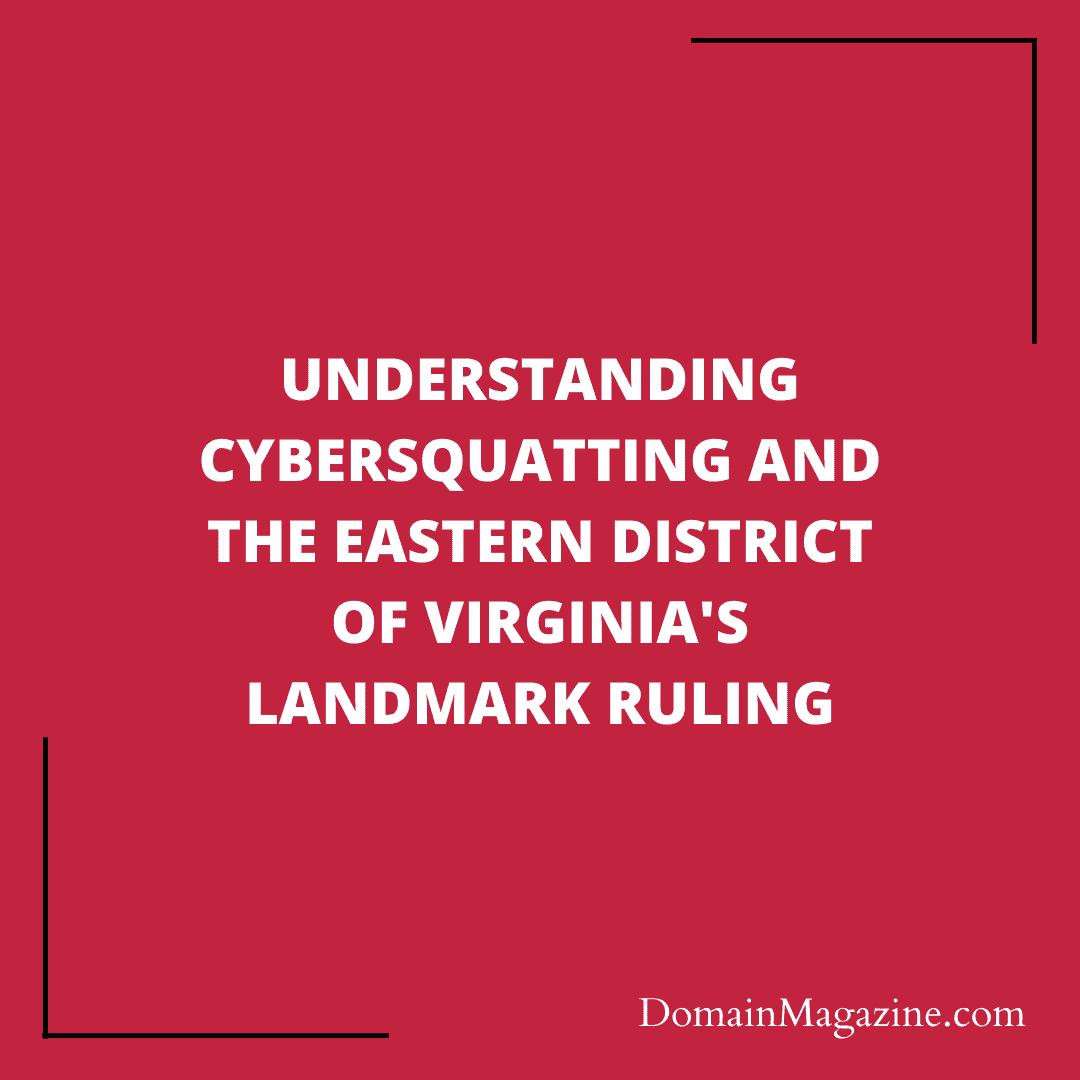In the vast and ever-expanding digital landscape, domain names hold immense value as the virtual addresses that connect businesses and individuals to their online presence. However, with the growing prominence of cybersquatting, a significant challenge arises, as unscrupulous actors register domain names that are deceptively similar to famous trademarks with the aim of profiting from confusion.
Recently, a landmark decision in the Eastern District of Virginia shed light on cybersquatting and its legal implications for domain name owners. In this comprehensive article, we delve into the key insights from the case of Getir U.S. Inc. v. Doe, exploring the rise of cybersquatting, the importance of “bad faith intent to profit,” the burden of proof, distinguishing cybersquatting from gripe sites, and proactive measures to protect domain names.

The Rise of Cybersquatting
Cybersquatting has emerged as a persistent challenge in the digital sphere, where opportunistic individuals and entities deliberately register domain names that are nearly identical to well-known trademarks or brand names. In the case of Getir U.S. Inc., the infringing websites were getir190.com and 190getir.com. By creating confusion among internet users, cybersquatters aim to capitalize on the brand’s reputation to drive traffic to their own websites for financial gain or malicious purposes. This practice can significantly damage a brand’s reputation and dilute its online identity, making it essential for domain name owners to stay vigilant and take proactive measures to protect their digital territories.
The Importance of “Bad Faith Intent to Profit”
In the Getir case, the Eastern District of Virginia emphasized the critical role of “bad faith intent to profit” in cybersquatting disputes. To establish a case of cybersquatting, a plaintiff must demonstrate that the domain name registrant acted in bad faith and intended to profit from the misuse of trademarks. Proving bad faith intent can be a challenging task, but it is a crucial element in obtaining legal relief and protecting the brand’s online reputation.

The Burden of Proof
In cybersquatting cases, the burden of proof lies on the plaintiff who brings the lawsuit against the domain name registrant. The plaintiff must present compelling evidence that the registrant registered the domain name with the malicious intent to profit from the brand’s reputation or intentionally create confusion among consumers. In the case of Getir U.S. Inc., the burden of proof was not met, leading to the denial of their request for default judgment. Meeting the burden of proof requires meticulous gathering of evidence and expert legal representation to strengthen the case.
Cybersquatting vs. Gripe Sites
It is essential to distinguish cybersquatting from gripe sites to avoid legal misunderstandings. While cybersquatting involves the deliberate intent to profit from a brand’s reputation, gripe sites are platforms for expressing criticism and grievances against a company or individual. In the case of Getir U.S. Inc., the court highlighted the distinction between cybersquatting and legitimate criticism through gripe sites. Understanding this difference helps domain name owners respond appropriately to genuine grievances while taking legal action against cybersquatters.

Protecting Your Domain Name: Proactive Measures
The Getir case serves as a cautionary tale, emphasizing the importance of adopting proactive measures to safeguard domain names and brand reputation. Regularly monitoring domain registrations and trademarks can help detect potential instances of cybersquatting at an early stage, allowing domain name owners to take immediate action to protect their brand identity and online presence. Implementing robust domain name acquisition and protection strategies can be instrumental in preventing cybercriminals from exploiting a brand’s reputation for malicious gain.
Conclusion
Cybersquatting continues to be a pervasive threat in the digital era, underscoring the need for domain name owners to be vigilant and well-informed about their legal rights. The Eastern District of Virginia’s landmark ruling in the Getir case highlights the importance of demonstrating “bad faith intent to profit” in cybersquatting disputes and the burden of proof that falls on the plaintiff. By differentiating between cybersquatting and gripe sites and taking proactive measures to protect domain names, businesses can maintain their brand integrity, online presence, and consumer trust in an ever-evolving digital landscape. Through diligence, knowledge, and strategic protection measures, domain name owners can navigate the complexities of cybersquatting and secure their rightful place in the virtual world.


Join the Discussion